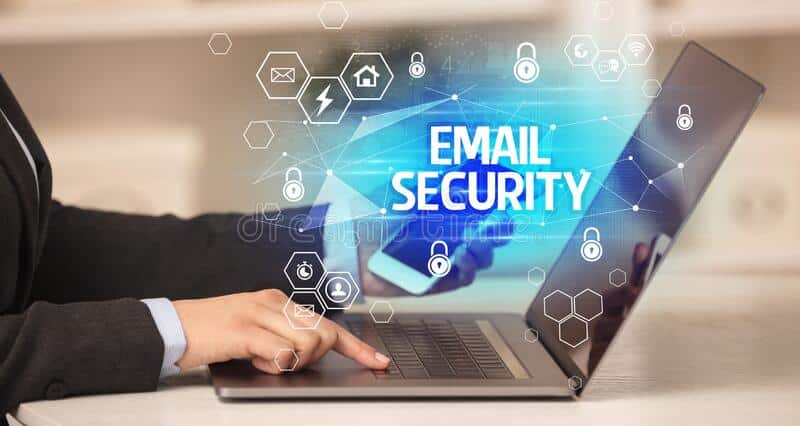Why do I need to worry about email security protocols?
Email security protocols protect your email and business from outside interference.
Why is there a need to add security protocols? The Simple Mail Transfer Protocol (SMTP) has no built-in security.
Thankfully, numerous security protocols work with SMTP. This blog will look at the most common ones and how they protect your emails.
SSL and TLS
The most common of email security protocols, that protect email as it traverses the internet are Secure Sockets Layer (SSL) and its successor, Transport Layer Security (TLS).
Transport Layer Security (TLS) is a standard internet protocol that encrypts email for privacy and secure delivery. TLS prevents unauthorized access of email when it’s in transit over internet connections. Google Workspace previously encrypted email with Secure Sockets Layer (SSL), but now uses TLS for encryption.
TLS and SSL are often both referred to as SSL. TLS is an updated, more secure version of SSL.
Domain Spoofing Protection With Sender Policy Framework
Sender Policy Framework (SPF) is an industry-standard email authentication method. It’s an effective way to help protect your domain from spoofing, and to help prevent your messages from being marked as spam.
Hackers and spammers regularly mask their domain when attempting to infiltrate a system or scam a user because a domain can be traced by location and owner or, at the very least, blacklisted. By spoofing a malicious email as a healthy working domain, they stand a better chance of an unsuspecting user clicking through or opening a malicious attachment.
The Sender Policy Framework has three core elements: the framework, an authentication method, and a specialized email header conveying the information.
DKIM keeps your emails secure
DomainKeys Identified Mail (DKIM) is a standard email authentication method that adds a digital signature to outgoing messages. Mail servers that receive messages signed with DKIM can verify messages actually came from the sender, and not someone impersonating the sender. DKIM also checks to make sure message contents aren’t changed after the message has been sent.
When receiving servers can verify messages are from you, your messages are less likely to be marked as spam.
With DKIM authentication, you improve the likelihood that legitimate messages are delivered to recipients’ inboxes. Receiving servers can verify messages are actually from your domain, and aren’t forged.
Help prevent spoofing and spam with DMAC
Domain-based Message Authentication, Reporting, and Conformance (DMARC) is a standard email authentication method. DMARC helps mail administrators prevent hackers and other attackers from spoofing their organization and domain. Spoofing is a type of attack in which the From address of an email message is forged. A spoofed message appears to be from the impersonated organization or domain.
DMARC also lets you request reports from email servers that get messages from your organization or domain. These reports have information to help you identify possible authentication issues and malicious activity for messages sent from your domain.
Spammers can spoof your domain or organization to send fake messages that impersonate your organization. DMARC tells receiving mail servers what to do when they get a message that appears to be from your organization, but doesn’t pass authentication checks, or doesn’t meet the authentication requirements in your DMARC policy record. Messages that aren’t authenticated might be impersonating your organization, or might be sent from unauthorized servers.
DMARC is always used in conjuction with SPF and DKIM.
If you want to know more about Email Security and if your business email is setup correctly, give us a call on 1800 312 972 – we’re here to help.
